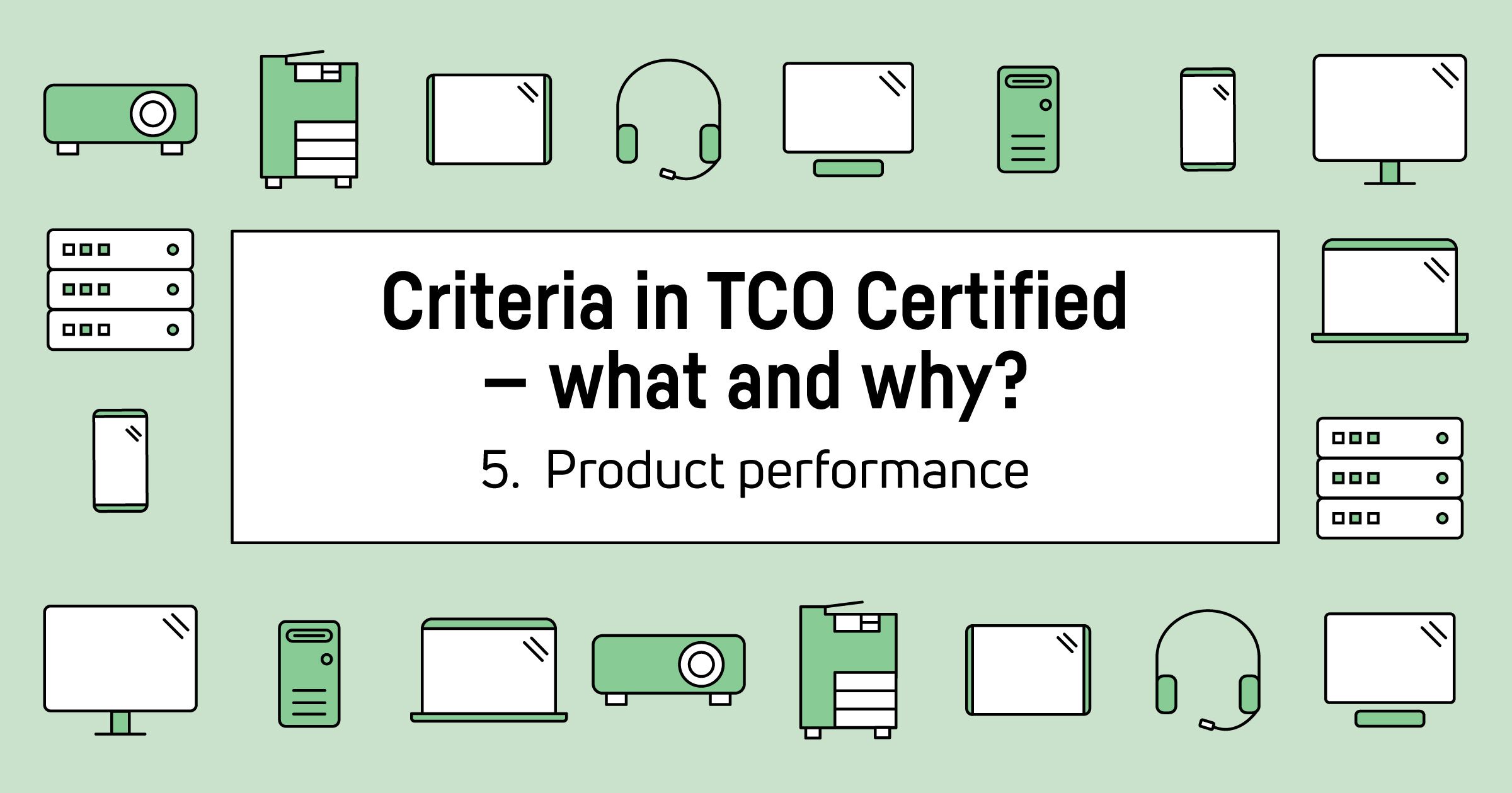A low-performing product can reduce user productivity and satisfaction which may lead to a short service life. High energy consumption can lead to large emissions of greenhouse gases, which contributes to the climate crisis. By taking both product performance and environmental factors into account, user productivity can improve and devices can be in use longer.
Product performance is essential for user satisfaction and productivity. Low-performing products are also problematic from a sustainability perspective — in many cases, these products have a shorter lifespan, which leads to pollution, e-waste and high resource consumption. Discarding products prematurely is often also more costly for the purchasing organization.
Our approach: balancing product performance with energy efficiency
Product performance, user satisfaction and the development of more circular IT products are interconnected. In order for IT products to be more sustainable, all these factors need to be prioritized. Balancing product performance with energy efficiency is also important to reduce the product’s climate impact.
Criteria in TCO Certified — what and why?
This series of articles cover the eight criteria areas in TCO Certified. We go through the most critical sustainability challenges connected to IT products and how you can reduce the risks by including TCO Certified in procurement. All criteria are mandatory, and compliance with criteria is always independently verified.
High-performance products can meet the user’s needs for a longer period of time. This way, the product’s service life can be extended, which is an extremely important factor in reducing resource consumption, reducing greenhouse gas emissions and the amount of e-waste produced. Using the product for a longer time is also often better from an economic perspective, and provides a lower total cost of ownership for the purchasing organization.
Product performance criteria focus on:
- Requiring that product performance is balanced with energy efficiency through specific criteria for each product category.




